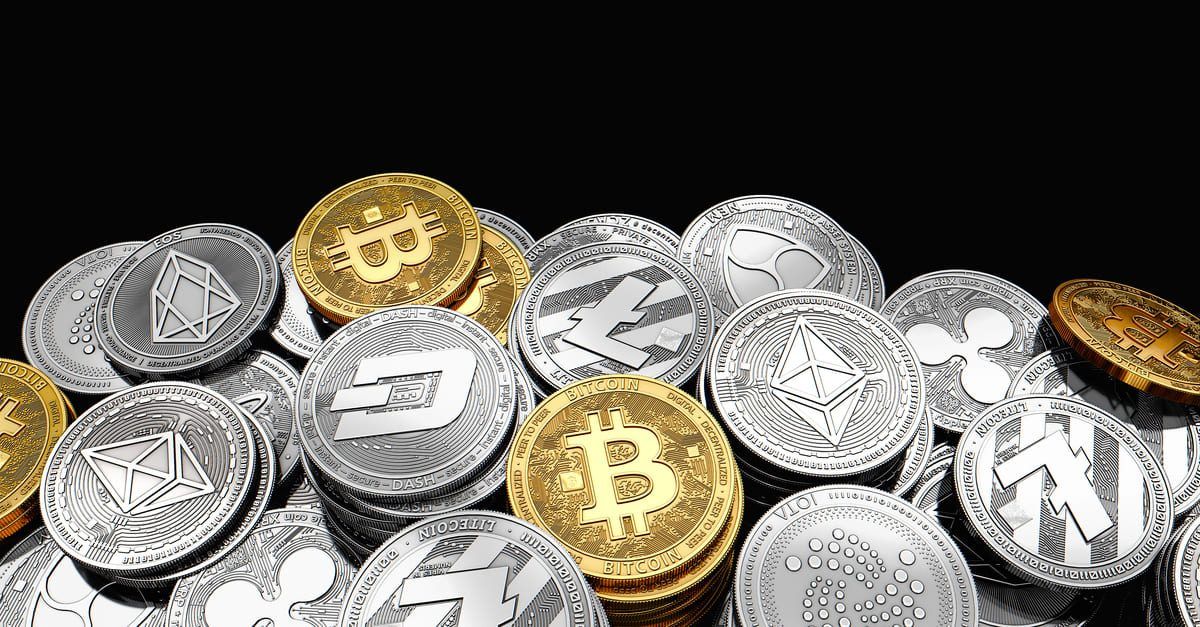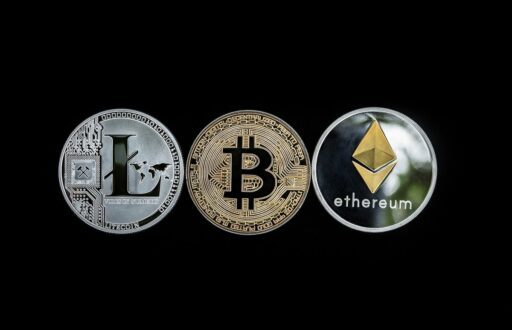In the rapidly evolving world of cryptocurrency, traders are constantly seeking secure and reliable platforms for their digital asset exchanges. This comprehensive guide delves into the top US-based crypto exchanges, providing insights into their security, trading volume, features, and regulatory compliance. With detailed analysis and expert commentary, this guide aims to equip readers with the knowledge needed to make informed decisions in selecting the right exchange for their trading needs.
Key Takeaways
- Criteria such as security, trading volume, and features are crucial for ranking top US-based crypto exchanges.
- Understanding the differences between centralized and decentralized exchanges can significantly impact your trading style and preferences.
- Robust security protocols and user best practices are essential for safeguarding digital assets on trading platforms.
- Advanced trading features and educational resources can enhance trading decisions and overall user experience.
- Staying informed about emerging trends, technologies, and regulatory changes is key to adapting to the future of crypto trading on US exchanges.
Evaluating the Top US-Based Crypto Exchanges

Criteria for Ranking: Security, Volume, and Features
When evaluating the top US-based crypto exchanges, we prioritize trading volume, trading features, transparency, and security. These elements are essential for a robust trading environment and form the foundation of our ranking methodology.
- Trading Volume: Reflects the liquidity and market activity on the exchange.
- Trading Features: Encompasses the tools and functionalities available for traders.
- Transparency: Indicates the exchange’s openness and honesty about its operations.
- Security: Assesses the measures in place to protect users’ assets.
Our analysis goes beyond the basics, considering additional aspects such as the number of coins listed, the exchange’s compatibility with trading signals, transaction speed, and any extra offerings that enhance the trading experience.
We also scrutinize the exchanges’ customer support efficiency, platform accessibility, and whether they provide educational resources and in-built crypto wallets. These factors collectively determine the exchange’s overall user-friendliness and reliability.
Comparative Analysis of User Experience
When selecting a crypto exchange, the user experience is paramount. Ease of use and intuitive design are critical for traders of all levels. A well-designed interface can significantly reduce the learning curve and enhance the overall trading experience.
- Navigation: Clear and simple navigation is essential for efficient trading.
- Speed: Fast loading times and quick transaction processing are highly valued.
- Support: Accessible customer support can greatly influence user satisfaction.
- Mobile Experience: A seamless mobile app extends trading capabilities on the go.
The goal is to provide a platform that feels natural to the user, minimizing frustration and maximizing efficiency.
User feedback and analytics play a significant role in shaping the user interface. Performance cookies, for example, help exchanges understand key indexes which are crucial for delivering a better user experience. Customized ads and functionalities, such as social media sharing, are also tailored based on user interaction data.
Accessibility and Regulatory Compliance
Ensuring that users can easily access and use crypto exchanges is as crucial as adhering to the stringent regulatory frameworks that govern them. Accessibility involves user-friendly interfaces, availability of customer support, and educational resources that cater to both novice and experienced traders.
In terms of regulatory compliance, exchanges must navigate a complex landscape of laws and regulations. This includes adhering to Know Your Customer (KYC) and Anti-Money Laundering (AML) guidelines, as well as ensuring the privacy and security of user data. The following table summarizes the compliance status of some leading US-based crypto exchanges:
| Exchange | KYC Required | AML Compliance | Privacy Policy | User Data Protection |
|---|---|---|---|---|
| Exchange A | Yes | Yes | Comprehensive | High |
| Exchange B | Yes | Yes | Basic | Moderate |
| Exchange C | No | Partial | Comprehensive | High |
It is imperative for traders to select exchanges that not only offer a seamless trading experience but also prioritize legal compliance and the protection of their personal and financial information.
Exchanges that fail to comply with regulations risk severe penalties and loss of trust from the trading community. As the regulatory environment continues to evolve, exchanges must stay ahead of changes to maintain their standing and provide a secure platform for their users.
Understanding Different Types of Crypto Exchanges

Centralized vs Decentralized Exchanges
When exploring the landscape of cryptocurrency exchanges, one must understand the fundamental differences between Centralized Exchanges (CEX) and Decentralized Exchanges (DEX). Centralized exchanges are akin to traditional financial institutions, where a single organization oversees operations, providing a more controlled environment for trading. They facilitate the direct conversion of fiat currency into cryptocurrency, which is why most crypto trading occurs on these platforms.
On the other hand, Decentralized Exchanges operate without a central authority, allowing users to trade directly with one another. This model not only increases accountability and transparency but also aligns with the decentralized ethos of cryptocurrency. However, DEXs are often seen as less user-friendly, especially when it comes to features like currency conversion, as they typically do not support direct fiat to crypto transactions.
While CEXs have been criticized for their susceptibility to hacking, they have significantly bolstered their security measures in recent years. Conversely, DEXs, with their distributed server architecture, are less prone to cyber-attacks and server downtime.
Here’s a quick comparison of the two exchange types:
- Centralized Exchanges (CEX): Controlled by a single entity, higher risk of hacking, direct fiat to crypto transactions.
- Decentralized Exchanges (DEX): No central authority, trade directly with peers, less risk of cyber-attacks, no direct fiat to crypto transactions.
Features and Limitations of Each Exchange Type
When venturing into the realm of cryptocurrency trading, understanding crypto exchanges is key for trading success. Centralized Exchanges (CEX) and Decentralized Exchanges (DEX) offer distinct features and limitations that cater to different trader needs.
Centralized Exchanges are known for their user-friendliness and a wide range of services including customer support, a variety of listed cryptocurrencies, and advanced trading features like margin accounts. However, they often come with higher fees and are subject to regulatory oversight, which can affect their accessibility in certain regions.
Decentralized Exchanges, on the other hand, are lauded for their security and privacy, as they allow for direct peer-to-peer transactions without the need for an intermediary. While they offer lower fees and are generally free from regulatory constraints, they can be less intuitive for new users and may lack the same level of customer support and variety in cryptocurrency listings.
Choose the right platform, learn trading basics, leverage tools, and prioritize security and compliance for a successful crypto trading experience.
Here’s a quick comparison of the two exchange types:
| Exchange Type | User-Friendliness | Fees | Security | Regulatory Oversight | Cryptocurrency Listings |
|---|---|---|---|---|---|
| CEX | High | High | Moderate | High | Extensive |
| DEX | Low | Low | High | Low | Limited |
Choosing the Right Exchange for Your Trading Style
Selecting the right cryptocurrency exchange is a pivotal step for any trader or investor. The choice should align with your trading goals, experience level, and the specific features you require. Consider the exchange’s liquidity, fee structure, and the range of available cryptocurrencies before making a decision.
- Liquidity: Ensures you can buy and sell assets at stable prices.
- Fees: Can significantly impact your trading profitability.
- Cryptocurrency Range: Offers flexibility in trading different assets.
It’s essential to assess how an exchange’s offerings match your trading strategy. Whether you prioritize day trading, long-term investing, or diversifying your portfolio, the exchange should facilitate your approach effectively.
Finally, don’t overlook the importance of user experience and customer support. A platform that is intuitive to use and provides prompt assistance can greatly enhance your trading experience. As you evaluate your options, remember that the best exchange for you is one that not only meets your current needs but also supports your evolving trading journey.
Security Measures and Best Practices

The Importance of Robust Security Protocols
In the realm of digital asset trading, robust security protocols are non-negotiable. Exchanges must employ a variety of measures to ensure the safety of user funds and personal information. For instance, two-factor authentication (2FA) has become a standard practice, often using text messages or authentication apps to provide an additional layer of security beyond just a password.
User responsibility in security is also paramount. It’s essential to use strong passwords and practice vigilant online security habits. Remember, cryptocurrency transactions are irreversible, and recovering lost crypto due to account breaches is highly unlikely.
Regulatory compliance and understanding exchange protocols are crucial for safeguarding investments in crypto trading.
Here’s a snapshot of security features provided by some US-based exchanges:
| Exchange | 2FA Method | Account Lock | Cold Storage | MPC System |
|---|---|---|---|---|
| Kraken | Yes | Yes | N/A | N/A |
| BitMEX | Yes | N/A | N/A | Yes |
| Bitvavo | Yes | N/A | Yes | N/A |
| Binance | Yes | Yes | N/A | N/A |
While most users are satisfied with the security protocols in place, incidents of hacked accounts highlight the ongoing battle against cyber threats. Exchanges continue to innovate, but users must remain vigilant and informed.
How to Safeguard Your Digital Assets
Protecting your digital assets, especially crypto, requires a conscious effort. The best way to protect your crypto is by combining strong personal security practices with the robust features offered by exchanges. It’s crucial to understand that cryptocurrency transactions can’t be reversed, making recovery nearly impossible if your account is compromised.
Of course, it’s also essential to use a strong password and personal online security practices to help protect your account.
Here are some steps to enhance the security of your digital assets:
- Utilize two-factor authentication whenever available.
- Regularly update and manage your list of approved wallet addresses.
- Store the majority of your assets in cold storage, away from potential online threats.
- Always perform a Know Your Client (KYC) verification process when using new trading features or platforms.
Remember, while exchanges like Crypto.com and Gemini offer various security measures, such as multi-factor authentication and wallet address safe listing, the responsibility ultimately lies with you, the user.
Exchange-Specific Security Features
When selecting a crypto exchange, it’s crucial to consider the unique security features that each platform offers. OKX stands out with its integration of cold wallets and paper-based private keys, ensuring a high level of asset protection. Users can also opt for offline crypto wallets, providing additional peace of mind.
Decentralized Exchanges (DEXs) offer a different approach to security. By distributing the responsibility for verifying trades across a network, DEXs like those mentioned increase accountability and transparency, making them less susceptible to single points of failure and cyber-attacks.
Gemini’s approach to security includes two-factor authentication, device management, and wallet address safe listing. Additionally, a mandatory KYC process is in place to enhance trading security.
Centralized exchanges have historically faced challenges with security, but recent advancements have significantly bolstered their defenses. Despite some skepticism from crypto purists, these platforms have become more resilient to hacking attempts, with many adopting rigorous security protocols to protect users’ assets.
Advanced Trading Features and Educational Resources

Margin Trading and Crypto Loans
Margin trading in the cryptocurrency market allows traders to borrow funds to increase their trading position beyond what would be possible with their own capital alone. This leverage can amplify both gains and losses, making it a powerful tool for traders who understand the risks. For instance, with a $1,000 margin and 10x leverage, a trader can take a position worth $10,000.
Crypto margin trading is legal in the US. Although it is inherently risky, it’s attractive to investors due to the high profit it can provide.
Crypto loans, on the other hand, enable investors to lend their digital assets in exchange for interest or to use their crypto holdings as collateral for a loan. This can be a strategic way to earn passive income or get liquidity without selling assets. It’s important to consider the terms and interest rates of these loans, as they can vary widely between platforms.
Here’s a quick overview of the types of margin available:
- Isolated margin: Margin set for individual positions, limiting liquidation risk to the margin used.
- Cross margin: Utilizes the entire account balance as margin, spreading risk across all open positions.
Additional fees are often incurred when engaging in margin trading, as borrowing funds is not free. Traders should be aware of these costs and factor them into their trading strategies.
Leveraging Educational Tools for Better Trading Decisions
In the dynamic world of cryptocurrency trading, educational tools are invaluable for both novice and experienced traders. These resources help users understand market trends, analyze trading patterns, and make informed decisions.
Platforms like Binance and Coinbase offer a range of educational content, including tutorials, webinars, and market analyses. It’s crucial to choose secure exchanges that not only provide educational resources but also prioritize user safety with features like two-factor authentication and cold storage.
- Research: Begin by exploring the educational offerings of various platforms.
- Practice: Utilize demo accounts to apply knowledge without financial risk.
- Engage: Participate in community forums and discussions to gain insights.
- Apply: Implement learned strategies in live trading, starting with small investments.
By taking advantage of these tools, traders can enhance their understanding of the crypto ecosystem and refine their trading strategies, leading to better decision-making and potentially improved investment outcomes.
The Role of Community and Support in Crypto Trading
In the dynamic world of crypto trading, the community and support systems play a pivotal role in a trader’s success. A robust community provides a platform for sharing insights, strategies, and real-time market trends, which can be invaluable, especially for new traders. Support from the exchange, on the other hand, ensures that traders can resolve issues swiftly and continue trading with minimal downtime.
- Community Forums: Places where traders can exchange ideas and learn from each other.
- Social Media Groups: Networks for immediate news and sentiment analysis.
- Customer Support: Essential for resolving technical or account-related issues.
- Educational Resources: Help traders stay informed and improve their trading skills.
The collective wisdom of a well-informed community, coupled with responsive customer support, can significantly enhance the trading experience and lead to better decision-making.
Exchanges that foster a strong sense of community and provide comprehensive support services are often preferred by traders. This preference is reflected in the longevity and loyalty of a platform’s user base. It’s not just about the technology; it’s about the people behind the trades and the network that supports them.
The Future of Crypto Trading on US Exchanges

Emerging Trends and Technologies
As the crypto landscape evolves, several key trends are shaping the future of trading on US exchanges. The aftermath of the FTX collapse continues to reverberate through the industry, prompting traders and platforms alike to reassess their risk management strategies. Meanwhile, regulatory frameworks are tightening, with a clear trend towards increased oversight.
- Bear Market Takes Hold
- Resurging and Expanding Use Cases for NFTs
- Continuing Fallout from FTX Collapse
- Increasing Regulation of Cryptocurrency
The landscape is rapidly changing, and staying informed about these trends is crucial for anyone involved in the crypto market.
Innovation in technology is also playing a pivotal role, with advancements in blockchain infrastructure and the integration of artificial intelligence in trading algorithms. These developments promise to enhance the efficiency and security of digital asset trading, making it more accessible to a broader audience.
Regulatory Changes and Their Impact
The landscape of US-based crypto exchanges is continually shaped by regulatory changes. The Securities and Exchange Commission (SEC) plays a pivotal role in this evolution, with its decisions directly influencing market operations. For instance, if the SEC’s allegations against a major player like Coinbase are upheld, it could lead to significant operational changes and set a precedent affecting the entire cryptocurrency industry.
Recent regulatory shifts have prompted exchanges to adapt in various ways:
- Enhancing compliance departments
- Implementing stricter Know Your Customer (KYC) and Anti-Money Laundering (AML) policies
- Adjusting to new tax reporting requirements
The interplay between innovation and regulation is delicate, as overregulation could stifle growth while underregulation might lead to investor vulnerability.
As regulations tighten, exchanges are also focusing on transparency and investor protection, which could lead to increased trust and stability in the crypto market. However, these changes come with the challenge of maintaining a competitive edge in a rapidly evolving industry.
Preparing for the Evolution of Digital Asset Trading
As the landscape of digital asset trading continues to evolve, traders must stay informed and adaptable to new trends and technologies. The ability to anticipate and prepare for changes is crucial for sustained success in the crypto market. With regulatory bodies like the CFTC’s Global Markets Advisory Committee pushing for a consensus-driven approach to asset classification, it’s clear that the future will bring more structured and robust markets.
To stay ahead, traders should consider the following:
- Regularly update their knowledge of emerging technologies and trading platforms.
- Engage with community forums and educational resources to understand the impact of regulatory changes.
- Practice due diligence in evaluating new trading features and their potential risks and benefits.
The proactive adaptation to regulatory changes and technological advancements will define the next generation of successful crypto traders.
Moreover, understanding the fee structures of various platforms can significantly impact profitability. For example, AEVO, a decentralized exchange (DEX), offers competitive fees and features such as pre-market trading and low price slippage, which can be advantageous for traders looking to maximize their returns.
Conclusion
In the dynamic world of cryptocurrency trading, selecting the right exchange is crucial for security and success. Our comprehensive guide has navigated through the top US-based crypto exchanges, highlighting their unique features, security measures, and the variety of services they offer. Whether you’re a seasoned trader or new to the digital asset space, this guide aims to empower you with the knowledge to choose a platform that aligns with your trading needs and goals. Remember, the best exchange for you depends on your individual requirements, including the types of transactions you intend to make, the cryptocurrencies you wish to trade, and the level of support and educational resources you expect. As the crypto landscape continues to evolve, staying informed and vigilant will be key to your trading journey. We hope this guide serves as a valuable resource in your pursuit of secure and prosperous digital asset trading.
Frequently Asked Questions
What are the criteria for ranking the top US-based crypto exchanges?
The top US-based crypto exchanges are ranked based on several factors including security measures, trading volume, available features, number of supported coins, transparency, and user experience.
What are the key differences between centralized and decentralized crypto exchanges?
Centralized exchanges (CEXs) are managed by a company that provides a platform for trading cryptocurrencies, often with enhanced security and customer support. Decentralized exchanges (DEXs) operate without a central authority, allowing direct peer-to-peer trading which can increase privacy but may also come with increased risks.
Are advanced trading features like margin accounts available to US users?
Some crypto exchanges offer advanced trading features such as margin accounts, but these are not always accessible to US users due to regulatory restrictions.
How can I safeguard my digital assets when trading on crypto exchanges?
To safeguard your digital assets, use strong, unique passwords, enable two-factor authentication, keep your software updated, and store large amounts of cryptocurrencies in offline wallets. Always be cautious of phishing attempts and only use reputable exchanges.
What educational resources do the top crypto exchanges offer?
Many top crypto exchanges provide educational resources such as tutorials, articles, webinars, and community forums to help users understand the trading process and stay informed about market trends.
How might future regulatory changes impact crypto trading on US exchanges?
Future regulatory changes could impact crypto trading by altering compliance requirements for exchanges, affecting the availability of certain coins, and possibly influencing the features and services offered. Traders should stay informed and be prepared to adapt to new regulations.





